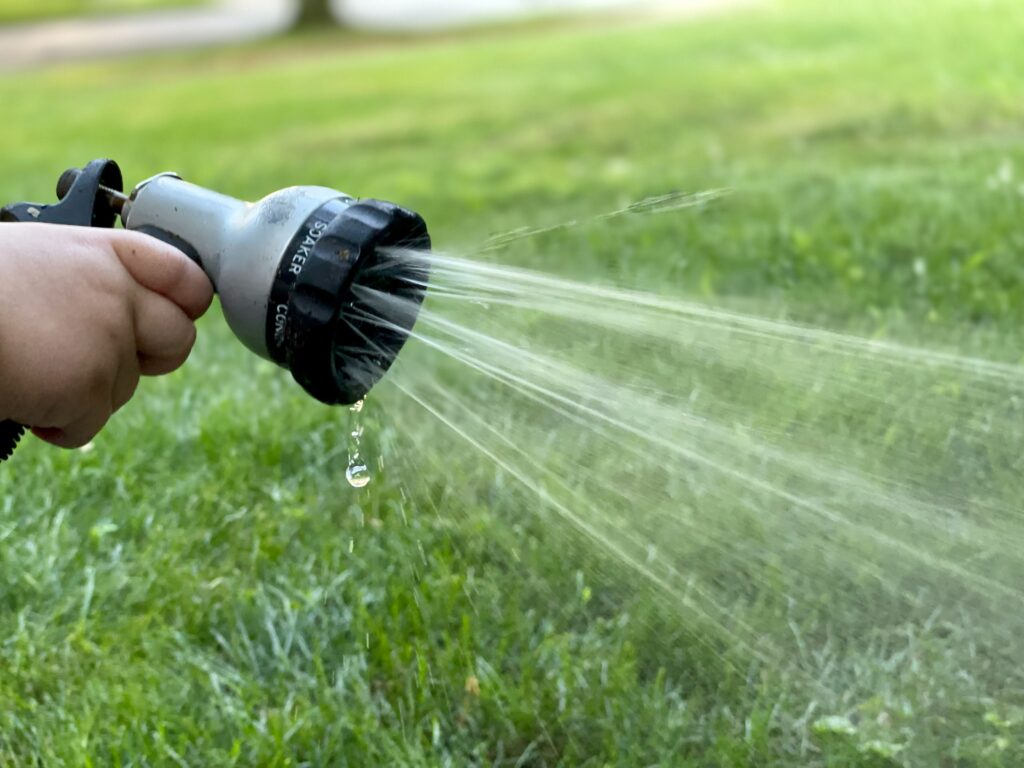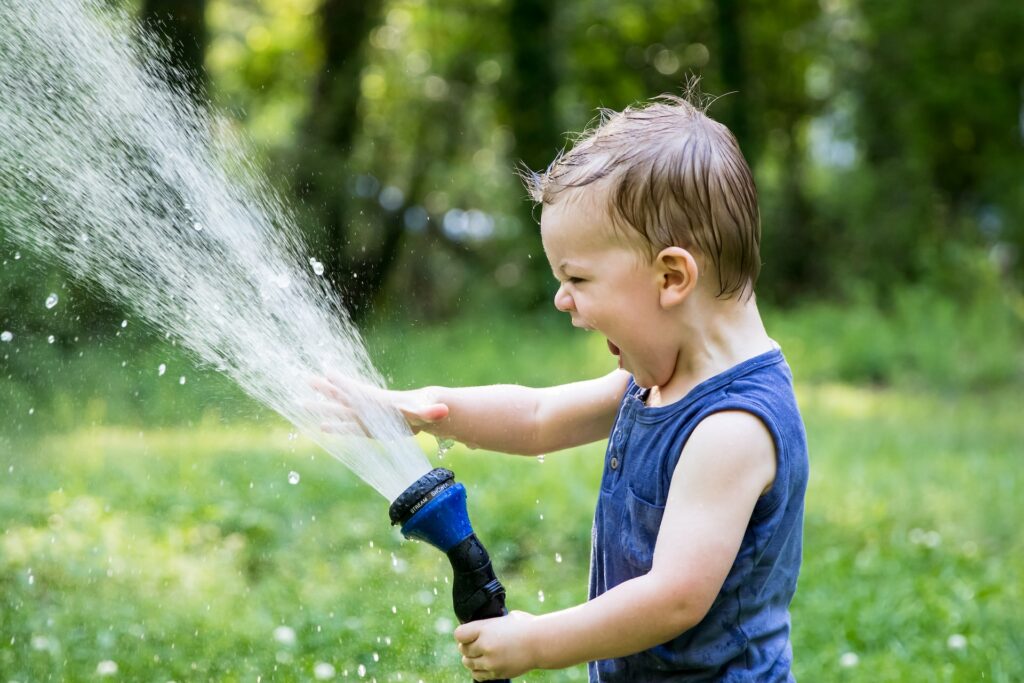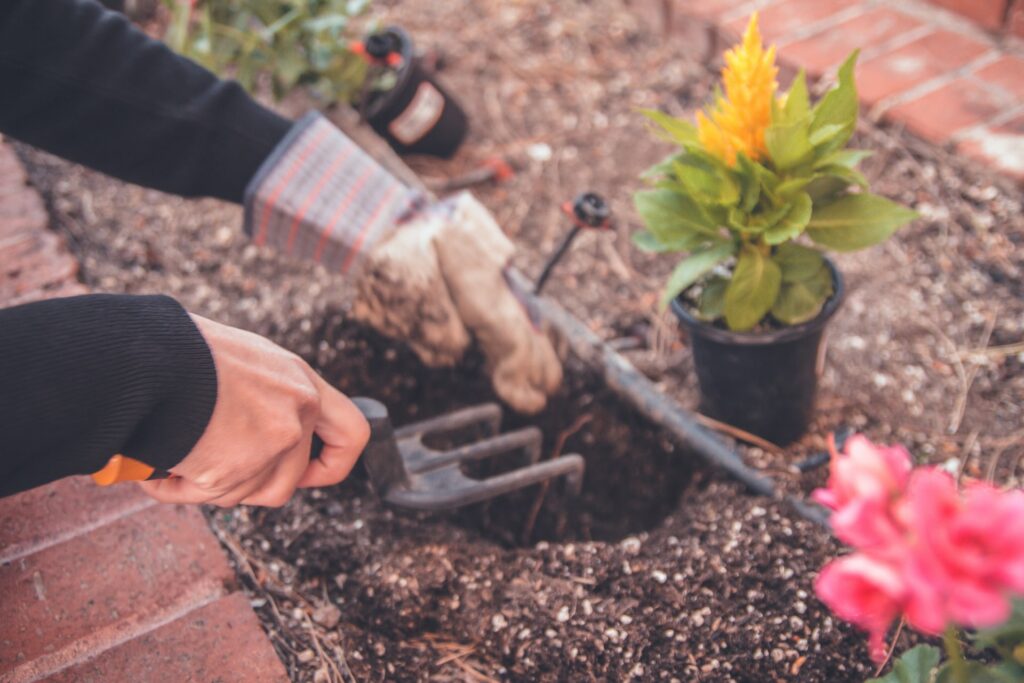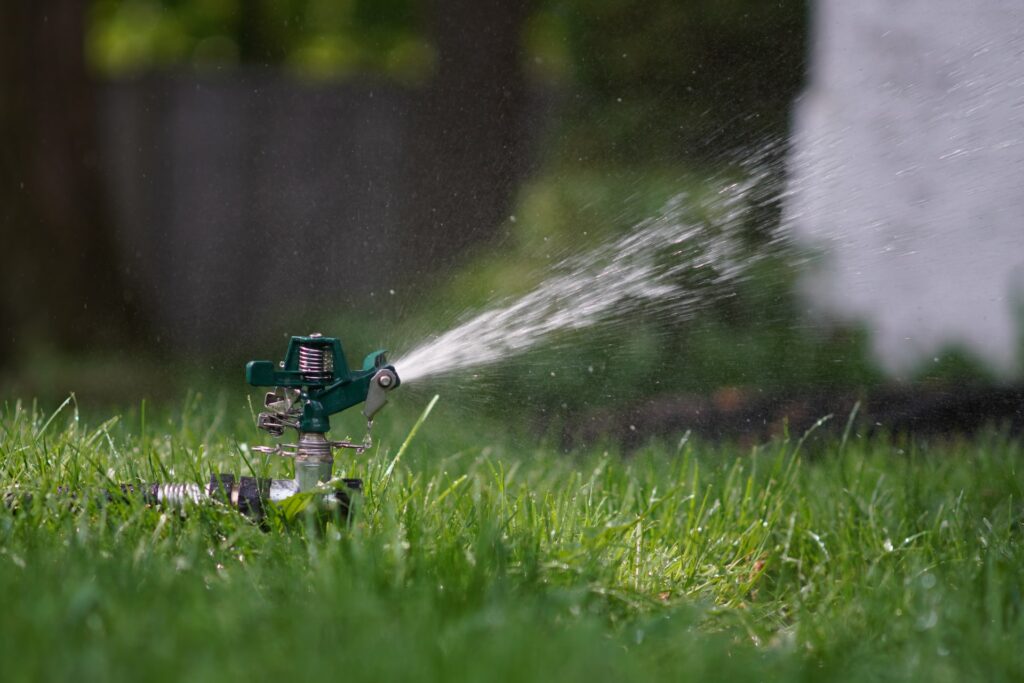Missed a day of watering grass seed? Homeowners everywhere have a shared goal: having an amazing lawn to show off. While it might appear easy from the outside, creating and maintaining a lush green paradise like what’s seen in gardening magazines is no small feat
One of the most frequent questions that homeowners and enthusiast gardeners have is about watering grass seeds. How to do it correctly? How often should newly planted grass seed be watered? Can I over-water grass seed?
Have you ever wondered how to achieve the perfect lawn without much effort? Well, let us show you! This article will provide all of the information necessary for growing an awesome grassy patch. Not only can we tell you how long your grass seed can remain moist and healthy, but also when it is best to water them after they are planted – so there’s no danger of drowning those precious little seeds! With this helpful guide, gardening will soon become a smooth ride.
How Long Can Grass Seed Go Without Water After You Plant It?
Have you considered growing grass, only to be deterred by the daunting task? Experienced gardeners know that it is not as easy as some may think — in fact, the success of your lawn depends on many influencing factors.
- Choosing the right soil for your garden is key to ensuring that the seeds you plant find their footing and grow into a lush, beautiful landscape.
- The type of turf you choose can make a significant difference in your lawn’s health and beauty. Whether it is the plush, durable variety or something more exotic, deciding on which grass works best for you will ensure that your lawn looks its very best!
- The climate in your area can bring many changes throughout the year. From humid, sweltering summers to crisp and cool winters – each season brings with it its own unique beauty and splendor!
When caring for your lawn, you’ll want to consider the wide diversity of grass types – each variety requiring varying degrees of water and maintenance. Some could take longer to grow while others may flourish more quickly under certain conditions.
Despite the different varieties of grass, all types share a similarity in terms of their durability – they can go long periods of time without water and still maintain their viability.
Without the daily nourishment of water, even a seedlet’s promise of lush growth can quickly wither into dried husks – grass seeds included.
Without proper hydration, grass seed will be unable to take root and flourish. Even if it sprouts, the tender new growth isn’t resilient enough to last beyond one or two days of drought before perishing in the dry air.
Have you ever had that sinking feeling when you realize a day has slipped by and your precious grass seed hasn’t been watered? Does this mean certain death for the seeds or is it not as dire as one might think? Let’s explore what happens when we miss out on watering our new lawn.

How Often to Water Grass Seed?
To ensure that newly sown grass seeds flourish, it’s necessary to understand the watering needs of your particular climate and soil. Different conditions necessitate different amounts of water; consider factors like temperature, sunlight exposure and amount of rainfall when deciding how much you’ll need to supply for optimum growth.
Gardeners must tend to their lawns with care, as even seemingly small details like location and season can have a major impact. To help new grass get its start properly, consistent watering twice daily for around five to ten minutes is essential.

When Should You Stop Watering New Grass Seed?
After the fresh grass sprouts, cut down your watering session time and make it an extended daily ritual, until you eventually enter a rhythm of 40 minutes every other day. Find tranquility in giving tender love and care to your growing garden with consistent hydration!
When the grass is thriving, give it a break and limit watering sessions to just twice or three times per week. That way, your lawn can enjoy some much-deserved relaxation!
When watering your newly-planted grass, it is essential to be both consistent and even. Too much water in one area can cause drowning while too little will leave spots parched – let’s ensure each part of the lawn receives its own share!
Watering your lawn is an important task that can ensure it will thrive and be beautiful. Follow the rule of thumb: sprinkle or water each seed evenly for optimal moisture levels. This way, all seeds receive equal nutrients to flourish in lush greenery!
If you’re getting your lawn ready for spring, make sure to provide the right conditions for germinating grass seed so that it remains in top health. The necessary requirements are not difficult – just a bit of knowledge and effort!
Gardening isn’t just a matter of planting and growing; there are certain conditions that require additional steps. From over-seeding to building new lawns, our list can help you be prepared for any situation your garden may face. Don’t let patchy problems surprise you – know the rules in advance and get ready for success!
Over-Seeding to Thicken Your Lawn
Refresh your lawn with over-seeding! This age-old gardening technique is quick and easy, an ideal solution for anyone looking to thicken their turf or reestablish a patchy yard. Gardeners everywhere endorse this amazing method of restoring green life back into grass that’s been damaged from wear or lack of TLC.
Keep your lawn looking lush and healthy by following a simple two-step process – water it daily, twice per day in newly planted areas. Stick with the routine until you begin to see new grass coming through!
After a week of diligently tending to your plants, reward their efforts with one well-earned watering session each day.

VadimVesenin via VistaCreate
Building Entirely New Lawns
Gardeners who want to bring vitality and life back into their lawn need to take on a new challenge: sowing grass seed. A full watering schedule should be implemented, starting with preparing the soil followed by post-planting irrigation and then germination waterings. Balance is key here, as it’s important not to overdo it – no more than three or four minutes per session!
Prolonged watering can quickly turn your green thumb into a brown one, causing plants to experience over-watering issues.
If you find your lawn taking on a soggy look, it could be due to over-watering. This will likely only produce negative consequences for vegetation health and growth, so keep an eye out if watering frequently!
Solving Patchy Lawn Issues
When it comes to patchy lawns, a one-size-fits all solution is not always the answer. Small patches of dead grass can be dealt with by hand watered care, while larger problems call for an over seeding treatment – ensuring your yard looks lush and vibrant in no time!
For lawns with spotty patches, you have options. For small areas of dead grass, a little extra TLC could bring it back to life – just give it some hand-watered love! But if the problem is bigger than expected, then consider over seeding – guaranteed to make your yard look lush and beautiful in no time!
Be sure to stay on top of watering when you’ve recently seeded your lawn. Because even though it won’t suffer irreparable damage, a neglected patch can slow down the growth process and leave you with bare grass for longer than necessary!
VadimVasenin via VistaCreate
What Happens If You Forgot to Water The Grass Seed?
Have you ever wondered what would occur if your enthusiasm for gardening led to a forgetful moment when watering the grass seed? Don’t worry, one missed day is usually nothing to fret about; the general consensus suggests that everything should remain in working order.
If you miss out on a couple days of your routine, the consequences could be unpredictable…
Grass seeds may seem small, but they pack a powerful punch when it comes to the importance of water; without it for two or three days, these precious little embryos start to perish and their potential to germinate is lost. Sadly, what’s been left arid can become even drier with time — potentially forcing you into starting from scratch!
Don’t let a couple of days ruin your lawn’s beautiful potential! With these simple life hacks, you can quickly get back to having the perfect green grassy space that all your neighbors envy.
- Ensure your soil is soaked to perfection with the next watering by making sure it’s wet all the way down to 5 inches.
- To promote lush, healthy growth for plants and gardens alike, establish a regular morning watering routine. A consistent schedule will help green thumbed gardeners reap the rewards of their labor!
- Ensure the health of your soil by taking extra-special care! Avoid trampling it with footsteps, don’t store heavy items on top of it – and whatever else you can do to keep its ecosystem strong.
If you’re looking to give your grass seed the best start possible, why not try high-phosphorous fertilizer? It’s a great way to keep that precious greenery in tip-top shape if watering isn’t always top of mind.
How Long Does Grass Take to Germinate?
With the ideal water quantity in mind, it’s time to discover how long it takes until you see your grass seed sprout and start thriving. Let’s find out!
Correct watering is essential for successful germination and growth of seedlings. By scheduling waterings throughout the day, you can ensure your seeds have an adequate amount of moisture without getting over-saturated – making it possible to reduce down to one session per day once they are established.
Gardeners can anticipate the first sprouts of grass to emerge within a span of 5-30 days after they plant their seeds. However, several criteria determines how soon or if at all your lawn comes into full bloom!
It’s no secret that germinating grass can be tough, but don’t lose hope! Here are some quick tips to help solve your problem and ensure lush lawns: from pests or diseases to proper watering techniques, there is sure to be something on this list of reasons why you should know more about growing beautiful green pastures.
Timing
The success of growing grass seed is all about perfect timing. Unfortunately, when it comes to gardening, many gardeners find themselves in difficult situations due to ill-timed actions like planting near a frost period or waiting too long between waterings.
To ensure a successful grass seed planting, it’s important to make sure you understand the weather in your area. Creating and adhering to an optimum watering schedule offers seeds their best chance at thriving! Doing this will help guarantee that your new lawn is healthy and green for years to come.

Seed Type
Every type of grass seed has unique requirements for optimal growth. Depending on where you live and the particular conditions in your area, some varieties may thrive while others struggle to take root! It’s important to research which kind will work best for you before planting – a ‘one-size-fits-all’ approach simply won’t do when it comes to selecting the right seeds.
Knowing which seeds to sow in your area is a must if you want a green and healthy lawn. So, don’t be shy – ask an experienced gardener for tips or do some research online! This will ensure that the grass you plant thrives despite any climate changes.
If not properly managed, all your hard work planting and tending to grass could be for naught – an utter waste of energy.
Coverage Rates
Knowing the correct seeding rate for your specific project is essential – too much and you may face a hefty bill, while not enough won’t get you the results that were hoped! Pay special attention to any coverage rates indicated on seed packages: some could require as little as two pounds of grass per 100 square feet, whereas others need six times more. Get this right from day one and avoid disappointment further down the line!
How Long Is It Allowed to Store Dry Grass Seeds Before Planting Them?
When it comes to seeding your lawn, timing is everything! The quality of grass seed diminishes with age, so be sure to purchase just the right amount for your project before its expiration date. After all, freshness equals success when planting a thriving and healthy yard!
With the correct storage conditions, grass seed can last anywhere from two to ten years – making sure it remains fresh and vibrant for your gardening needs! Depending on the type of seed you purchase, they may remain viable long past their expiration date.
When storing grass seed, it’s important to keep in mind that the longer you store them, the less likely they are to germinate. On average, after a year of storage there can be up to 20% reduction in expected growth rate – an issue worth considering if planting is on your horizon!
Grass seed storage can be crucial to their success in the garden. Too much air, moisture, or heat could threaten germination and make all your planting efforts ineffective if not monitored carefully!

A Few Tips About Planting Grass
Growing a lush, vibrant lawn doesn’t have to be an uphill battle. With some simple preparation and maintenance steps, you’ll be well on your way towards having the green grass of your dreams without any fuss!
- Get a jump-start on lush, green grass! Planting cool-season seeds in the early spring and fall gives your lawn an extra boost for that perfect look.
- Planting season is just around the corner! Get ahead of the game and start thinking about when to sow your warm-season grasses. Late spring provides ideal conditions for prepping a lush lawn that can survive summer heat waves.
- Carefully observe the ground during your seed-growing journey; take note of any changes in soil moisture levels to ensure a successful harvest!
Though abundant rainfall saves on time for lawn irrigation, it’s important to monitor your soil moisture levels so as to not find yourself in a situation of too much or too little water – both can have detrimental effects.Also, make sure not to confuse morning dew with a previous night’s rain!
Building the ultimate lawn is a feat of patience and persistence. With just two weeks of protection from added hydration, those tiny seeds will soon turn into an emerald haven – if you get your sun exposure in check! Too little or too much can do more harm than good for healthy development. Keep these tips close to make sure that what starts out as a small patch turns into lush perfection!
Cultivation of a lush, green lawn is no easy feat – but with the right guidance and concerted effort, you can achieve an idyllic oasis right in your own backyard. Follow our handy tips to bring out the softest and most verdant grass imaginable!

Do I need to water grass seed everyday?
Keep your lawn lush and green by watering it twice daily when there’s no rain. Don’t forget to continue drenching until the grass sprouts can be spotted – that’s when you know you’re doing something right!
Can grass seed dry out in one day?
If you’re planting new seeds, it’s important to keep them hydrated–or risk a hot and dry demise in as little as 12 hours! Without adequate water, the delicate sprouts can wilt within 2-4 days. But by promptly giving your grass two soaks upon sowing – particularly when sunny conditions soar above 74 degrees (26°C) – their survival rate should thrive.
What happens if you don’t water grass seed right away?
Without a regular supply of water, grass seeds quickly succumb to dryness and never get the chance to flourish. But with just one or two days of nourishment from freshly-fed moisture, these delicate green shoots can burst forth in an instant – only for it all to wither away without constant hydration.
How long can grass seed go without being watered?
After just a few days of growth, newly planted grass grass seed grow need to be kept hydrated or they will wither and die quickly. However, these hardy seedlings are built with resilience; once the blades have sprouted up from the ground those same plants can withstand weeks without water!
Read more: How to make bermuda grass thicker

